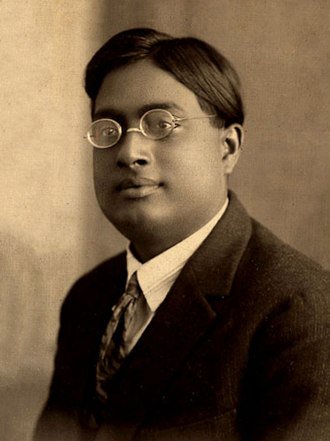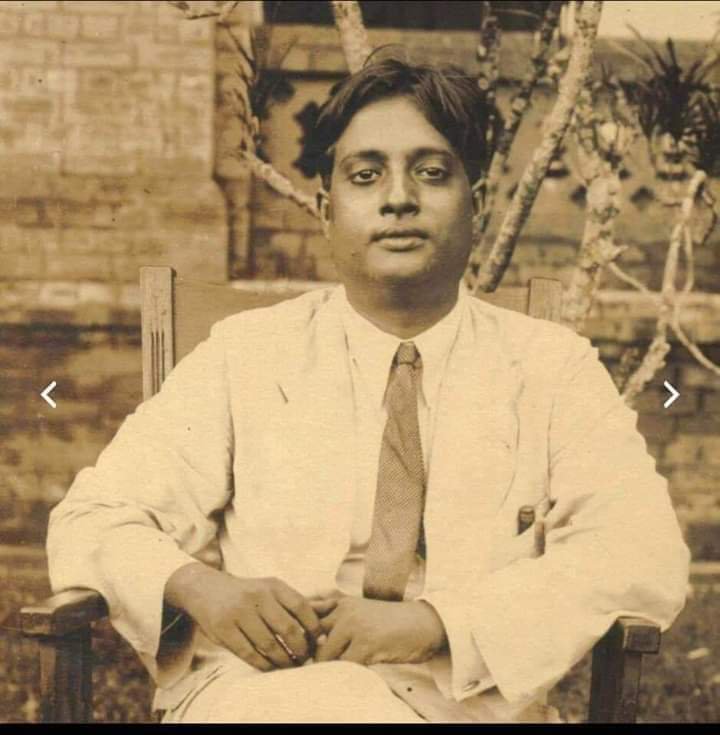The Bose In Boson: Remembering the Legendary Indian Behind the God Particle
One of the foundations of quantum mechanics is Bose-Einstein statistics. And as you must have noted, the Kolkata physicist’s name comes first — Einstein himself acknowledged that Bose’s was the larger contribution. #ForgottenHero #Science

Have you heard about the Bose-Einstein statistics technique, the Bose-Einstein condensate and the Boson particle?
Anyone interested in physics at even a cursory level would have heard about these nomenclatures, irrespective of whether they understand them or not.
These terms derive their name from both Albert Einstein and Satyendra Nath Bose; the latter being an Indian physicist who occupies a hallowed space in the world of science.
Bose played a critical role in furthering the discipline of theoretical physics, particularly the field of quantum mechanics.
He was awarded the Padma Vibhushan in 1954 for his immense contributions to the sciences, and also became a Fellow of the Royal Society in 1958.
On February 4, we celebrate the death anniversary of one of the world’s greatest ever physicists. It’s our good fortune that he was born an Indian.
Born on January 1, 1894, in Calcutta (Kolkata), Bose grew up in a middle-class household. His father, Surendranath Bose, was an accountant in the Executive Engineering Department of the Eastern Indian Railways.
Like many young Indians of the time, Bose was deeply influenced by the Indian freedom struggle. When he was just 11, Lord Curzon had infamously decided to partition Bengal.
After passing out of the Hindu School in Kolkata, he enrolled into the Presidency College where he completed his BSc and eventually MSc in the subject of Mixed Mathematics by 1915—topping his class in both.
Following his Master’s degree, he began working as a research scholar at the then newly-established University College of Science in Calcutta, where among other things, he studied the theory of relativity.
This was a unique period in the development of modern physics, particularly with the appearance of quantum physics in the Western academic world and the results that were generated following its emergence.
Bose was working as a research scholar and lecturer in an institution alongside the likes of future luminaries like fellow physicist Meghnad Saha, chemist NR Dhar and statistician PC Mahalanobis.
While there were perks, these were also difficult times for Indian researchers since advanced texts were hard to come by in the local library following the outbreak of World War I.
Most of the advanced research papers in physics were written in either French or German. As a consequence, both Bose and Saha took the trouble of learning these languages on their own.
In 1920, both Saha and Bose published a book titled ‘The Principles of Relativity,’ which was the first-ever English translation of Einstein’s works in both German and French.
In the following year, Bose joined the University of Dhaka’s Physics department as a Reader.
Here, he would work on a project that would, later on, prove to be one of his most important contributions to physics, deriving German physicist Max Planck’s quantum radiation law without any reference to classical physics.
In June 1924, Bose sent a letter to Einstein, which was attached with the wholly novel derivation he had come up with earlier.

“Though a complete stranger to you, I do not feel any hesitation in making such a request (for publication of this derivation in the Zeitschrift für Physik). Because we are all your pupils though profiting only by your teachings through your writings. I do not know whether you still remember that somebody from Calcutta asked your permission to translate your papers on Relativity in English. You acceded to the request. The book has since been published. I was the one who translated your paper on Generalised Relativity,” wrote Bose in his letter.
Einstein not only took the trouble of translating Bose’s work into German and got it published, but also added a personal note at the end of it.
“Bose’s derivation of Planck’s formula appears to me an important step forward. The method used here gives also the quantum theory of an ideal gas, as I shall show elsewhere,” Einstein wrote.
He also responded to Bose personally, calling his work an “important contribution.”
Today, Bose’s interpretation of Planck’s Law is responsible for the Bose-Einstein Statistics, a foundational element of quantum statistics.
This letter also gave Bose the opportunity to take his talents to Europe, where he not only met Einstein in Berlin but also got acquainted with the likes of Paul Langevin and Madame Curie.
He also got the opportunity to work at the Laboratory of Maurice de Broglie in France, where he learnt how to employ the X-ray spectroscopy and crystallography.
By 1926, Bose had returned to India, and in the following year was appointed the Head of the Physics department at the University of Dhaka on Einstein’s recommendation, despite not possessing a doctorate.
Through his time at the University of Dhaka, Bose’s academic output went from strength to strength, and he wrote papers on subjects like ‘D2 Statistics,’ ‘Total Reflection of Electromagnetic Waves in the Ionosphere,’ ‘On Lorentz Group’ (concerning relativity), ‘On an Integral Equation of the Hydrogen Atom Problem,’ etc. (Source: The Print)
By 1945, as the reality of Partition began to set in, Bose moved back to Calcutta University where he continued to teach and conduct research until his death in 1974.
Also Read: When Einstein Met Tagore: How the Legendary Scientist Engaged With India
Aside from his expertise in the field of physics, Bose was a remarkable polyglot, who took it upon himself to promote Bengali as the medium of instruction in schools.
Bose believed that students must be taught in their local language, and was deeply inspired by his visits to Japan, where he saw teachers teaching students about complex scientific concepts in Japanese.
Little surprise he also took the trouble of translating many scientific papers into Bengali. He would go onto establish the ‘Bangiya Bijnan Parishad,’ a society dedicated to promoting the sciences via regional languages.
While Bose was nominated for the Nobel Prize in Physics multiple times, he never won the award. However, he was seemingly unfazed about it saying, “I have got all the recognition I deserve”.
One presumes that he knew that his work would resonate with scientists for years to come, and that possibly brought him some comfort.
For example, the famous Boson particle derived its name from SN Bose not because he discovered it. English theoretical physicist Paul Dirac had named it so to honour Bose’s contribution to the Bose-Einstein statistics. The physics conducted at CERN has little relation to Bose’s work.
Bose passed away on February 4, 1974, but the legacy he left behind will stand the test of time.
(Edited by Gayatri Mishra)
Like this story? Or have something to share? Write to us: [email protected], or connect with us on Facebook and Twitter.
This story made me
- 97
- 121
- 89
- 167
Tell Us More
We bring stories straight from the heart of India, to inspire millions and create a wave of impact. Our positive movement is growing bigger everyday, and we would love for you to join it.
Please contribute whatever you can, every little penny helps our team in bringing you more stories that support dreams and spread hope.



















